
After Abandoning Ship, Washington Couple’s Cutter Found at Sea by Coast Guard
A couple who were forced to abandon their boat just 150 miles from the completion of a nearly three decade circumnavigation have been reunited with their vessel.
On Sunday, the Coast Guard located the cutter Kelaerin adrift off the coast of Fort Bragg. The Omega 45 belongs to Jim and Joy Carey, who had been cruising for 27 years, and were about 150 miles from completing a circumnavigation to their homeport in Bellingham, Washington, when they ran into gale-force winds and 30-foot seas, and were forced to abandon ship on June 16. They were airlifted by a Coast Guard helicopter in a dramatic rescue.
A Coast Guard cutter found the vessel while on routine patrol near Fort Bragg, according to a press release. Kelaerin was more than 440 miles south-southeast from its position in mid-June. The Coast Guard cutter towed the Omega toward the coast, where a 47-ft Motor Lifeboat crew relieved the tow and brought the vessel into Noyo Harbor on Monday morning.
The Careys are at the boat now and surveying the damage, according to a Latitude reader who’s in Fort Bragg.
“It’s not the loss of all the individual things we had on the boat, but the situation,” Jim Carey told KGW8 News. “Sailing 70,000 miles around the world and having one more day to go.”
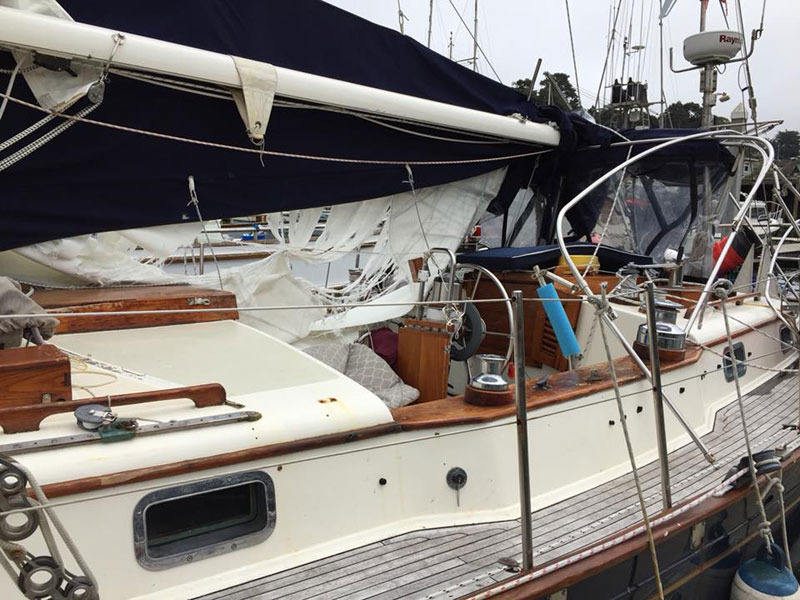
Joy Carey wrote a long, detailed version of the event that led up to their June 16 rescue. Here are a few edited excerpts: “I awoke around 3:30 to first a hard hit by a wave, so hard it literally felt as though we had been hit by a train while sitting on the tracks,” Joy wrote. “I was suddenly on the ceiling and tons of water came in through the companionway hatch. The noise inside the boat was deafening. I managed with some difficulty to swing out of the berth and when I put my feet on the floor I was standing in water up to my ankles . . . The sight was so horrifying and complex that I could barely take it in. It just couldn’t be possible that my beautiful boat, the one we had for 27 years and was so lovingly maintained, could look like this.
“I saw Jim at the wheel. He had blood covering half of his face. He looked shocked but was steering us down a huge wave. I had a hard time taking this view in as well. He asked me to get on the VHF and put out a MAYDAY call. I felt strange doing this, as I never pictured us asking for help. We never had since our first time together out in sailboats back in 1978. We got no answer.
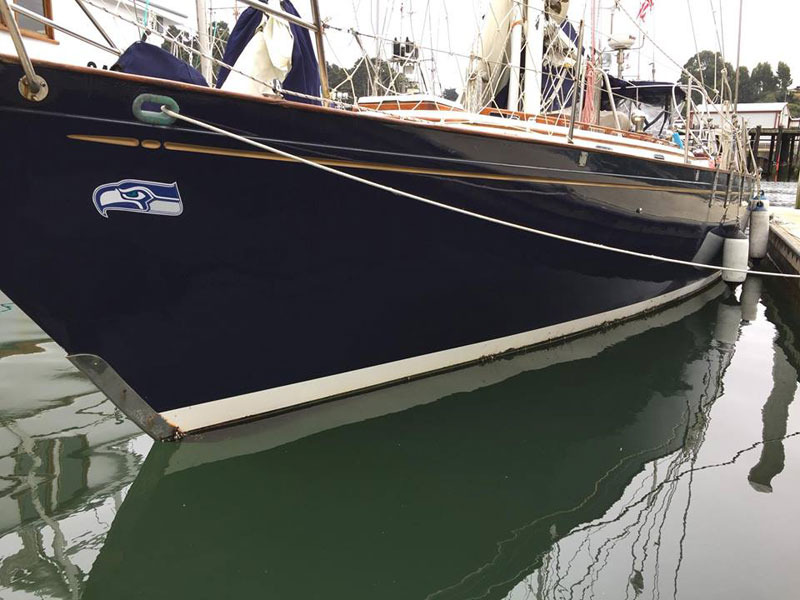
“Jim was pretty sure that we weren’t taking on any more water. It had been almost two hours since the wave had tossed us and we were both showing signs of hypothermia. Jim said my lips were turning blue and the blood caked on his face looked ghastly. I was doing OK with steering, but every once in a while a bigger wave broke near me and we would begin to broach. I had to hold on to the wheel with everything I had to keep it stern to. I screamed now and then. I know this because my voice was getting hoarse.
After getting no response on the VHF, the Careys made the decision to activate their EPIRB. “Almost four hours later, I heard the Coast Guard call us on the old VHF radio . . . and immediately felt we just might survive this ordeal after all . . . I was not aware when [the rescue swimmer] came aboard. I looked over to see [him] coming towards the cockpit and and informing me that we were getting off the boat. ‘No,’ I said. ‘We are staying on the boat.’ Jim was behind him and said, ‘Joy, we are getting off.’ I was incredulous. It was beyond comprehension that we would ever leave the boat. I still felt that, although, we were in serious trouble here, that we could save Kelaerin. How could we possibly leave her, after nearly 70,000 miles of cruising and 27 years together with only 150 miles to go? When [Jim] confirmed the Coast Guardsman’s declaration, with all his experience at sea, I knew finally that this battle was over. The sea had won.
“The hardest moment of both Jim’s and my lives were when we could see Kelaerin through the window and we both realized she was probably lost forever, that somehow we had failed her when she had been so good to us for so many years.” After rescuing the Careys, the Coast Guard had an hour-long flight back to the coast. The helicopter reportedly landed with just one minute of fuel left.
This story has been updated.
Shaka Challenge One and Done
On July 1, four singlehanded sailors departed Marina del Rey bound for Honolulu in the Pacific Singlehanded Sailing Association’s inaugural Shaka Challenge. The race is the brainchild of PSSA’s commodore, Jerome Sammarcelli, a veteran of the SSS Singlehanded TransPacific Race. The main inspiration for the new race was to attract, and make it easier for, sailors from Southern California.
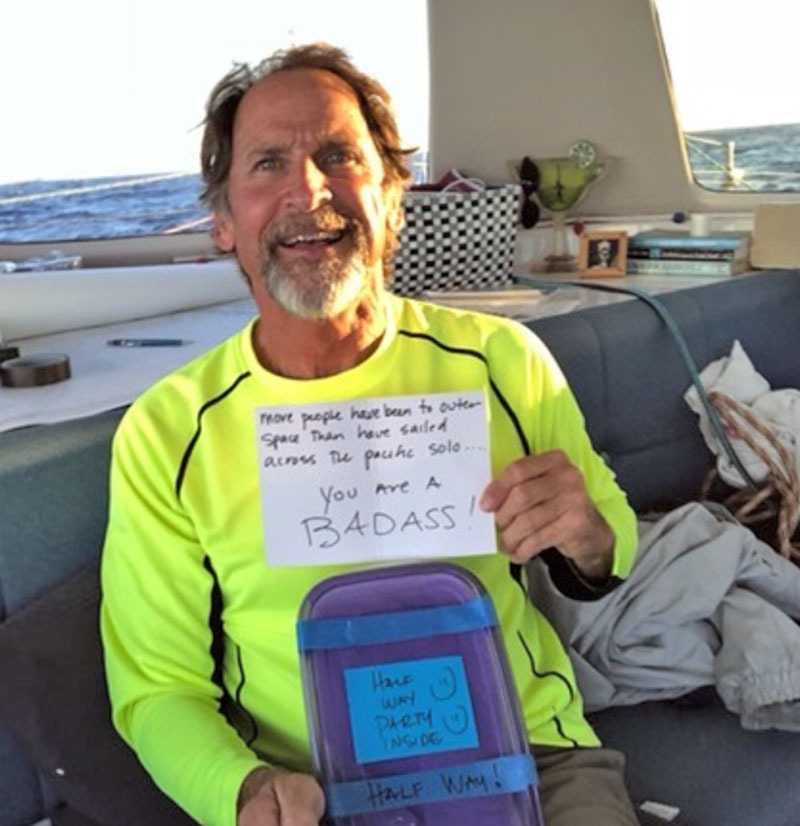
Larry Robertson was first to finish in his SeaWind 1000 catamaran Island Time. He was followed by Patrice Bonnefoi in his Beneteau Oceanis 45 La Vigie and Bill Ziel in his J/33 Aloha. They all made landfall on July 17, followed by Matt Harwich on July 21 in his Pacific Seacraft 31 Pavlova. Matt Harwich blogged while still two days out: “Have you heard of a movie called Groundhog Day? That pretty much sums up the past few days.”
Stress on the rigging and equipment was a constant issue for the sailors, more than they had anticipated. There were many reports of chafed lines, torn sails, bent bowsprits, tweaked padeyes, and other mishaps.
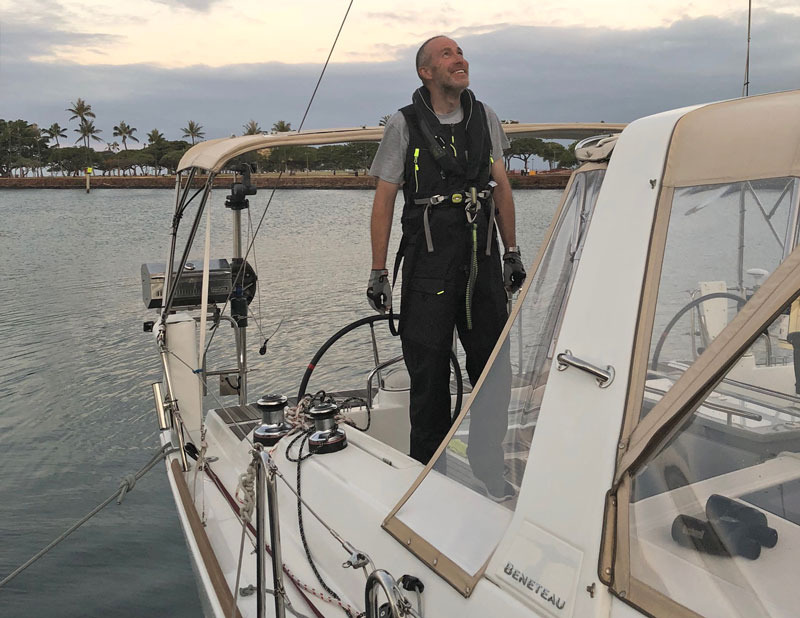
Surfing downwind on huge swells, sometimes at speeds that blew their minds, seemed to be a common source of exhilaration. Each had his own method of making the best of the deep wind angle that they experienced for most of the trip, and none of those involved using their spinnakers. Bill wished he had a double headsail instead of his asymmetrical spinnaker.
Larry and Patrice were within a couple of miles of each other for quite some time, to the degree that Larry requested on the VHF that Patrice “Go away; this is too nerve-wracking.” They also both had a close encounter with a strange vessel moving at 2 knots appearing as if out of nowhere and setting off their AIS alarms. The vessel hailed them to avert any potential collisions, and it turns out they were within a mile of a two-man rowing team who were part of a race from California to Hawaii. Usually singlehanders are the enigma out there, but this may have taken the prize.
Patrice reported being haunted by freighters that seemingly only appeared at night and then within a mere mile of La Vigie. Larry had a close call near the finish when he saw what looked like two large fishing boats very close by. He was unable to maneuver due to a wrestling match with his spinnaker in unexpected 25-knot winds and was bearing down on them. After he asked one of the vessels to divert course by 90°, he realized they were tugboats towing barges. Once he got his spinnaker doused, he ended up having to wait under bare poles as they passed so he could make the finish line.
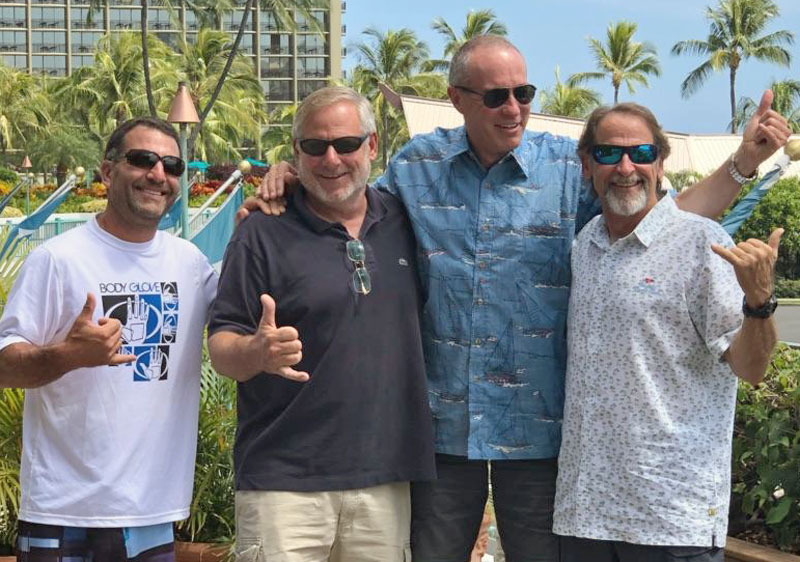
When I asked the sailors if they would do it again, I got an emphatic yes from Patrice, but “maybe not right away.” Bill says it was a “truly proud” moment of his life, and that he would certainly do it again if given the opportunity. Larry says it is too soon to answer that question, and Matt made it clear that this was a one-time endeavor. After experiencing the solo crossing firsthand, Bill (PSSA’s vice commodore) is determined to promote the race and keep it growing. PSSA hopes that there will be more sailors entering the Shaka Challenge in 2020.
Kudos
While we seek results we applaud progress. Even with our best intentions and awareness of things like the Texas-sized Pacific garbage patch it remains hard to eliminate our single-use plastic water bottle habit. They’re convenient and relatively cheap, though they cost more than double the cost of a gallon of gas and 2,000 times more than tap water. Historically the whole bottled water craze where people pay for filtered water in a plastic bottle with a fancy label started only 30 years ago. It’s hard to remember what we did before, but it’s not so long that it should be hard to quit.
We want to recognize folks who are helping us all make the break. Richmond Yacht Club is one that’s taken steps to make it more convenient to refill your reusable water bottles, which will save oceans and money.
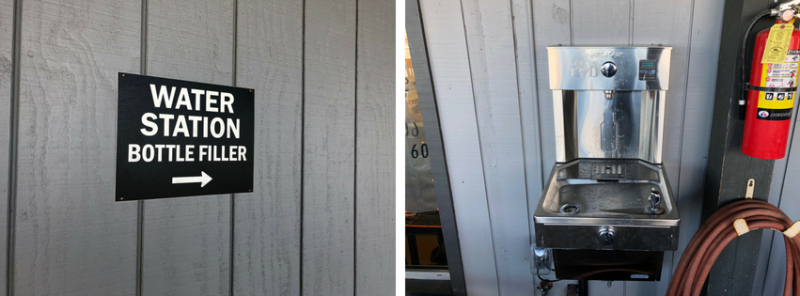
©2018 Latitude 38 Media, LLC
These efforts to prevent adding to the waste stream are running concurrent to the many efforts to clean up what is already cluttering the oceans. We’ve written about large-scale projects such as the Ocean Cleanup Project, which will deploy its first system to the Pacific from Alameda in the next few months, while clubs such as California YC in Southern California help with events like the Balloon Fishing Challenge.
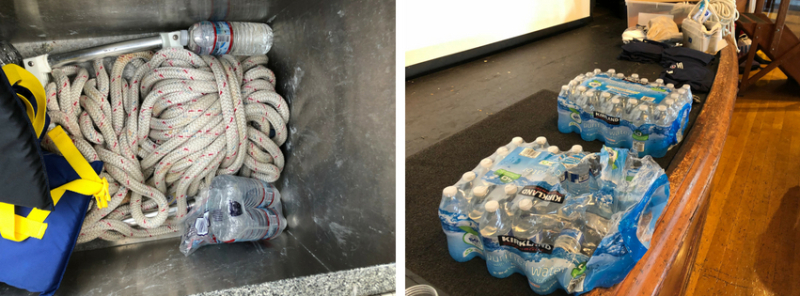
©2018 Latitude 38 Media, LLC
We know many other clubs, fleets and organizations are taking initiatives to make progress. If you have a success story you’d like to share let us know. As Confucius said, a journey of a thousand miles starts with hauling up the anchor.
Women Take the Tiller to Race
Women Sailing of Half Moon Bay Yacht Club offers their first-ever Take the Tiller Women Sailing Regatta this Saturday, July 28. All women are welcome, and you don’t need to have your own boat. The Regatta is open to Laser, Flying Junior, Coronado 15 and Cal 20 classes. The race area will be set within Pillar Point Harbor using inflatable marks.
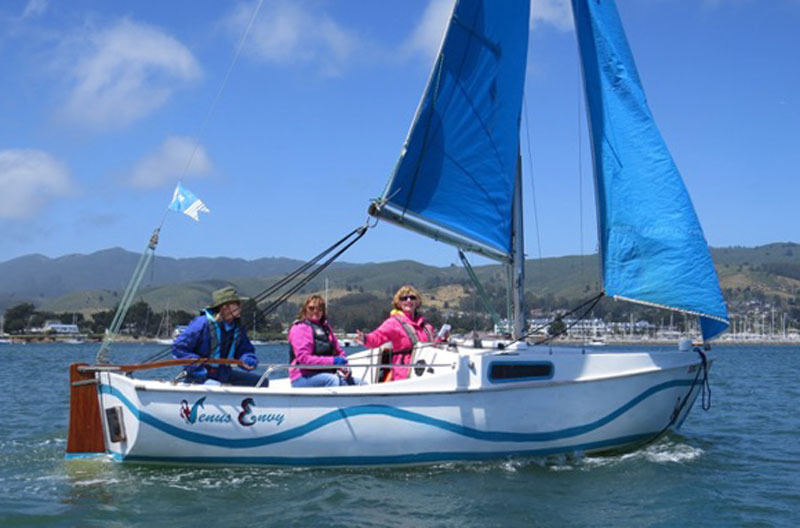
Check-in will be from 9-10 a.m. A mandatory sailors’ meeting will be held at 10 a.m. on the HMBYC patio. Five to seven races are scheduled, time permitting. The entry fee is: $20 per person, skippers and crewmembers. Lunch will be provided as part of the entry fee. Prizes will be awarded for first, second, and third place finishes in each division. Register at www.hmbyc.org.
The mission of Women Sailing of Half Moon Bay Yacht Club is to empower women and girls through sailing. The group sails on the second and fourth Thursday of each month April through October, hosts winter sailing seminars for the club, and raises funds for sailing scholarships for girls. Every year they sponsor one woman member who is fairly new to sailing to attend the Island YC’s two-day Women’s Sailing Seminar in Alameda each September.
